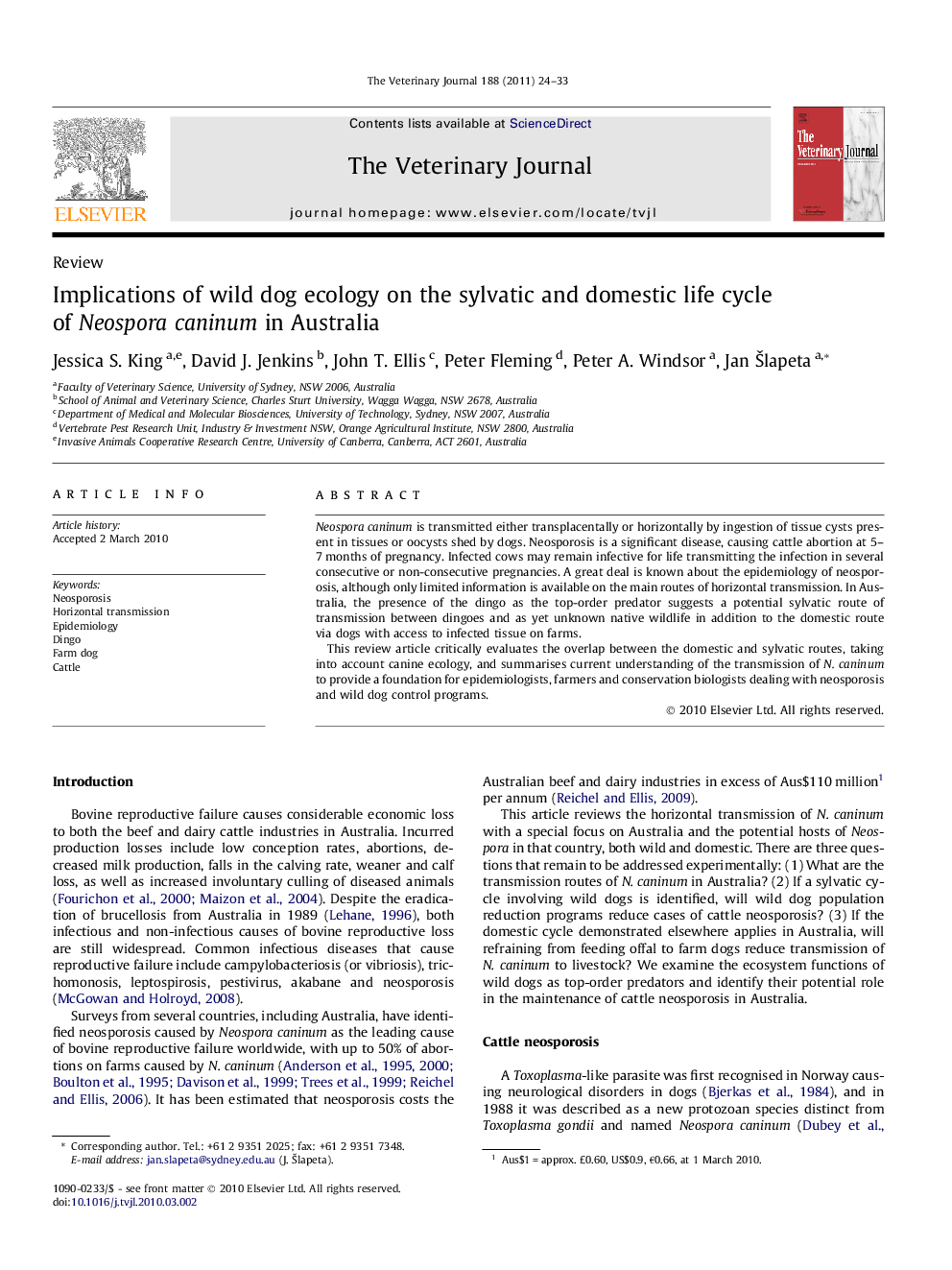| Article ID | Journal | Published Year | Pages | File Type |
|---|---|---|---|---|
| 2464622 | The Veterinary Journal | 2011 | 10 Pages |
Neospora caninum is transmitted either transplacentally or horizontally by ingestion of tissue cysts present in tissues or oocysts shed by dogs. Neosporosis is a significant disease, causing cattle abortion at 5–7 months of pregnancy. Infected cows may remain infective for life transmitting the infection in several consecutive or non-consecutive pregnancies. A great deal is known about the epidemiology of neosporosis, although only limited information is available on the main routes of horizontal transmission. In Australia, the presence of the dingo as the top-order predator suggests a potential sylvatic route of transmission between dingoes and as yet unknown native wildlife in addition to the domestic route via dogs with access to infected tissue on farms.This review article critically evaluates the overlap between the domestic and sylvatic routes, taking into account canine ecology, and summarises current understanding of the transmission of N. caninum to provide a foundation for epidemiologists, farmers and conservation biologists dealing with neosporosis and wild dog control programs.
